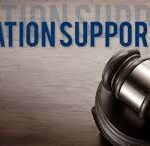Modern enterprises face increasingly complex asset ecosystems that demand sophisticated tracking, maintenance, and optimization capabilities beyond traditional spreadsheet-based approaches. Learning to streamline operations with asset management software enables organizations to transform disconnected maintenance activities into coordinated workflows that extend equipment lifecycles while reducing operational interruptions. The integration of asset management platforms with existing enterprise systems creates visibility across previously siloed departments, enabling data-driven decisions that balance reliability, cost, and performance objectives. This technical overview examines implementation methodologies, integration approaches, and operational strategies that maximize return on investment from asset management software deployment across diverse industrial and commercial applications.
Conducting Asset Hierarchical Analysis
Effective implementation begins with comprehensive asset categorization establishing parent-child relationships between systems, subsystems, and components. This hierarchical structure enables failure impact analysis that identifies critical assets warranting enhanced monitoring and maintenance protocols.
Classification should incorporate both physical attributes and operational significance factors. Beyond equipment type and technical specifications, categorization must consider production impact, redundancy availability, and replacement lead times that influence overall criticality scores.
Data migration from legacy systems requires structured cleansing protocols evaluating completeness, accuracy, and relevance. Historical records often contain inconsistent nomenclature and incomplete maintenance histories requiring normalization before importing into new platforms.
Asset attribute standardization establishes consistent terminology across the organization. Developing standardized naming conventions, equipment categories, and failure codes enables meaningful cross-facility analysis previously impossible with disparate classification systems.

Implementing Condition-Based Maintenance Triggers
Modern asset management platforms leverage real-time condition monitoring to initiate maintenance workflows automatically. Integration with sensors measuring vibration, temperature, pressure, and electrical characteristics provides early warning of developing failures before operational impacts occur.
Threshold configuration requires careful analysis of failure mode signatures. Rather than generic alarm settings, effective implementations establish equipment-specific parameters based on historical performance data and manufacturer specifications.
Maintenance action specificity increases with multi-parameter monitoring. Advanced systems correlate multiple indicators to differentiate between routine fluctuations and actual developing failures, reducing false positives that erode maintenance team confidence.
Escalation pathways should match organizational structure and expertise availability. Properly configured workflows route notifications to appropriate personnel based on fault type, severity, and specialized knowledge requirements.
Optimizing Inventory Management Integration
Parts inventory synchronization with maintenance requirements prevents both overstocking and critical shortages. Advanced systems analyze historical consumption patterns against forecasted maintenance activities to recommend optimal stocking levels.
Automated replenishment triggers maintain inventory thresholds without manual intervention. Integration with procurement systems initiates purchase orders when inventory reaches predetermined minimum levels, accounting for vendor lead times and order quantities.
Vendor management capabilities streamline procurement processes through preferred supplier designation, price agreement enforcement, and performance tracking. This integration reduces administrative overhead while ensuring compliance with procurement policies.
Mobile inventory management improves accuracy through barcode or RFID scanning at the point of use. Technicians can verify part availability before beginning work and record consumption in real-time, maintaining inventory accuracy without additional administrative steps.
Leveraging Predictive Maintenance Analytics
Failure pattern recognition algorithms identify developing problems before traditional indicators appear. Machine learning models trained on historical performance data detect subtle deviations from normal operating parameters often overlooked in manual monitoring.
Maintenance interval optimization replaces fixed schedules with dynamic timing based on actual equipment condition. This approach typically reduces maintenance costs 15-25% while improving equipment reliability by eliminating both premature and delayed interventions.
Technician deployment optimization matches skills with task requirements more effectively. Advanced systems account for certification levels, specialized training, and historical performance when assigning work orders to maintenance personnel.
Cost analysis tools provide granular visibility into maintenance expenses at equipment, system, and facility levels. This breakdown enables targeted improvement initiatives addressing specific cost drivers rather than generic cost-cutting measures.

Establishing Effective Compliance Documentation
Regulatory compliance features automate documentation requirements for various industries. From FDA validation in pharmaceutical manufacturing to DOT inspections for transportation fleets, properly configured systems generate required records during normal workflow execution.
Audit trail functionality creates defensible documentation of maintenance activities. Digital records capturing performer identity, timestamp, procedure followed, and parts used provide verification of work completion that satisfies both internal and external auditing requirements.
Certification tracking ensures properly qualified personnel perform critical tasks. Integration with training management systems prevents assignment of restricted activities to uncertified technicians, maintaining compliance with regulatory and insurance requirements.
Document management capabilities maintain current procedures, specifications, and safety protocols. Version control ensures technicians access only current documentation, while automated distribution pushes updates to affected personnel when procedures change.






